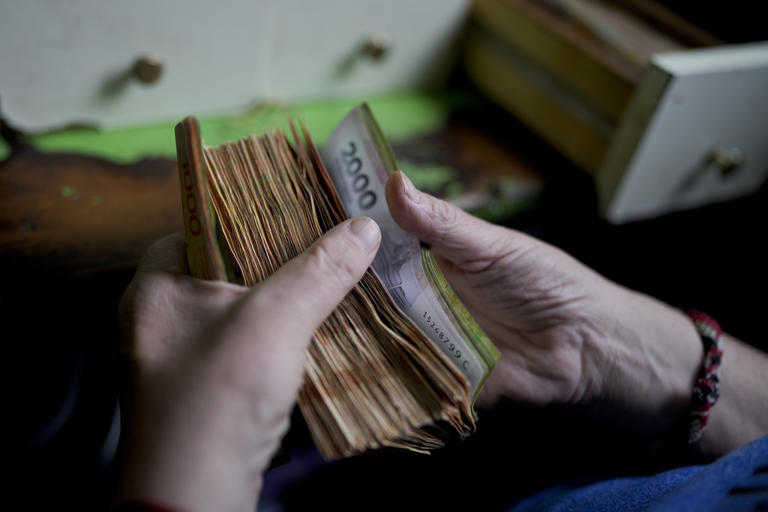In Argentina, the profound economic turbulence has prompted the government to take extraordinary measures to address the escalating inflation crisis. With prices skyrocketing at an alarming rate, the central bank recently announced a significant adjustment to the country’s currency system by introducing a new denomination of its largest banknote. This move, increasing the denomination by fivefold to 10,000 pesos, represents a bold attempt to alleviate the burden on citizens who find themselves grappling with the daily challenges of hyperinflation.
The decision to introduce the new 10,000 peso note is a response to the dire circumstances faced by Argentines, who have been forced to adapt to the ever-increasing cost of living. With the annual inflation rate soaring to an astonishing 287% in March, Argentina ranks among the nations with the highest inflation rates globally. This rampant inflation has not only eroded the value of the currency but has also inflicted considerable hardship on the populace, making everyday transactions a daunting task.
For many Argentines, the introduction of the new denomination offers a glimmer of relief, as it promises to simplify transactions and streamline commerce in a landscape dominated by uncertainty. Carrying large sums of cash for basic purchases has become the norm, with individuals resorting to oversized bags or even suitcases to accommodate the voluminous amount of currency required for routine transactions. By providing a higher denomination banknote, the central bank aims to ease the logistical challenges associated with cash transactions, offering a more practical solution for navigating the economic turmoil.
Despite the introduction of the new denomination, the preference for hard currency remains prevalent across Argentina, underscoring the deep-rooted distrust in the stability of the local currency. The 1,000-peso note, initially introduced in 2017, has witnessed a precipitous decline in value over time, mirroring the relentless march of inflation. Consequently, cash payments, particularly in hard currency, continue to reign supreme in the realm of commerce, with vendors incentivizing the use of paper bills through discounts and other incentives.
The economic landscape in Argentina has been further complicated by the policies of President Javier Milei, a libertarian figure who assumed office with promises to implement bold reforms aimed at curbing inflation and stabilizing the local currency. However, his austerity measures have been met with widespread discontent, exacerbating the economic hardships faced by ordinary citizens. The looming nationwide strike serves as a poignant reminder of the growing disillusionment with the government’s handling of the economic crisis.
Despite assertions of progress in combating inflation, concerns persist regarding the efficacy of government policies and their impact on the daily lives of Argentines. While there have been marginal improvements in monthly inflation rates, the overall economic outlook remains precarious, prompting policymakers to tread cautiously in their efforts to mitigate the effects of hyperinflation.
The introduction of the new 10,000 peso notes, adorned with portraits of historical figures such as Manuel Belgrano and María Remedios del Valle, serves as a tangible manifestation of the government’s acknowledgment of the need for pragmatic solutions to address the economic challenges facing the country. Additionally, plans to introduce even larger denominations, such as the forthcoming 20,000-peso note, underscore the ongoing struggle to contend with hyperinflation and its far-reaching ramifications for the Argentine economy and society at large.
